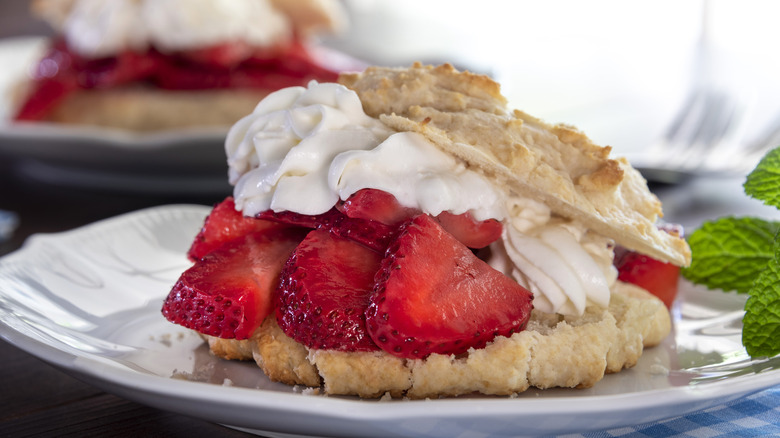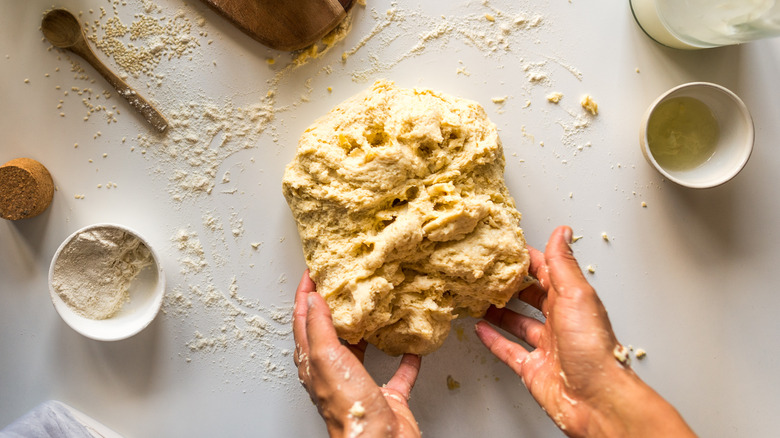The Mixing Mistake To Avoid When Making Shortcakes
When you think about shortcakes, do you picture the squishy, packaged cakes sold alongside grocery store strawberries during the summer or homemade sweet biscuits? Well, neither is technically wrong, but the store-bought stuff is a far cry from traditional shortcake. Stacked rounds of yellow sponge cake, strawberries, and whipped cream are delicious, but the dessert we know today has evolved since its origins. True shortcake is actually closer to a crumbly biscuit or scone than a soft sponge cake or airy angel food cake.
With the proper preparation of biscuits, there's a key mixing rule to follow when whipping up a batch of shortcakes: Shortcake dough needs to be gently combined to achieve the ideal texture and flakiness. One of the most common mistakes that home bakers make is over-mixing shortcake dough. For a truly tender shortcake, leave the beaters in the cabinet and forget the stand mixer.
It's easy to over-beat shortcake dough if you accidentally turn a mixer to a higher speed, or leave it running for too long. Over-mixing shortcake dough results in tough, flat cakes that don't embody the crumbly, yet soft mouthfeel of true shortcakes. Electric mixers can also generate heat, which may melt the butter in the shortcake dough, causing it to lose some of those tender layers after baking.
Handle with care
From a boozy twist on strawberry shortcake to a fruity reinterpretation in the form of peach shortcake, these desserts aren't really shortcakes without the right texture, which also means the right preparation. Cold ingredients and quick, gentle mixing are essential for achieving a flaky, crumbly shortcake, so you should consider mixing the dough by hand for a beautiful result. Some shortcake recipes might recommend swapping the convenience of a stand mixer and the precision of a handheld mixer for quick pulses in a food processor, but even with brief bursts of mixing, kitchen appliances are just too harsh for the necessary care of this dessert.
To properly mix your shortcake dough, first use a pastry cutter, or if you're short on specialty baking supplies, two forks, to incorporate the cubed, chilled butter and shortening into your flour. Once you've combined the dry ingredients and chilled fats into a dough that resembles a coarse meal, add the liquids and eggs to bind it all together. Carefully knead the dough to avoid over-mixing and melting the butter with your hands, then fold and flatten the dough to create layers that become flaky when baked. Now, pop them in the oven, and enjoy some terrifically tender, traditional shortcakes!

